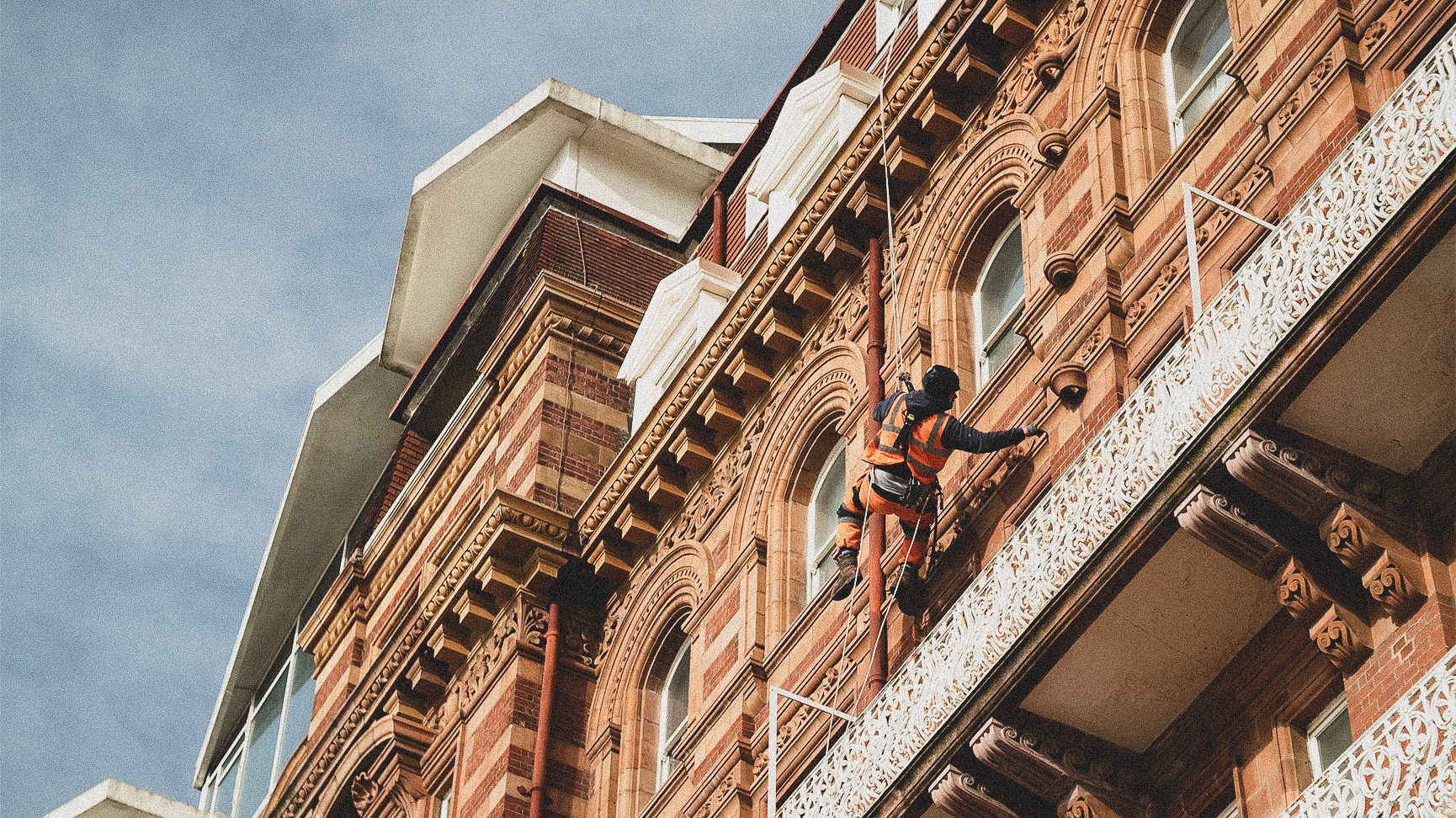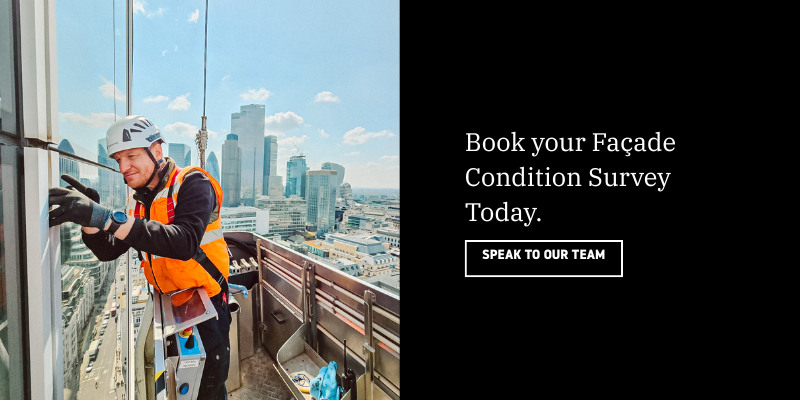A building’s façade does far more than define its appearance. It plays a vital role in overall building performance.
But when a façade starts to fail – whether through loose panels, corroded fixings, or unnoticed water ingress – the risks go far beyond aesthetics. These failures can become disruptive, costly, and, in the worst cases, dangerous.
For building owners, estate managers, or facilities managers responsible for safety and compliance, façade deterioration isn’t something you can afford to overlook, especially as we head into the harsher winter months.
Why façade failures happen
Every façade system, no matter how well designed, will deteriorate over time. Weather, pollution, movement, poor workmanship, and lack of maintenance all play a part.
- Failed gaskets and sealants are allowing water to penetrate the system.
- Corroding curtain wall fixings where moisture has breached protective coatings.
- Delamination or spalling in concrete or stone façades due to freeze-thaw cycles.
- Loose panels or cracked cladding from structural movement or poor installation.
- Blocked or missing drainage paths leading to trapped moisture and hidden decay.
These issues often develop gradually, and usually invisible from the ground until it’s too late. A small leak or failed seal might seem harmless at first, but over time it can compromise the system’s integrity and pose serious safety risks.

The real risks of ignoring façade defects
Façade failures can have far-reaching consequences and could pose a serious health and safety risk.
In recent years, several high-profile cases have involved façade components detaching and falling from height, sometimes with tragic consequences.
They can allow water ingress that leads to internal damage such as rot, mould, and corrosion of structural elements. Air and water leaks also compromise insulation, reducing the building’s overall energy efficiency. In severe cases, tenants or occupants may face disruption and downtime while emergency repairs are carried out. And for building owners or managers, a preventable failure can result in reputational damage and potential liability if it leads to an accident.
When you consider the combined cost of reactive repairs, lost revenue, and potential claims, the price of inaction is always higher than the cost of preventative maintenance.
Warning signs your façade could be failing.
While some issues require a professional inspection to detect, there are often early warning signs that something isn’t right. Persistent leaks or damp patches inside the building (especially around windows, junctions, or parapets) can indicate underlying problems.
Externally, cracks, spalling, or loose fixings on panels or masonry are clear red flags, as are signs of corrosion or staining on curtain wall framing and cladding. Failed sealants or missing gaskets around glazing systems can also allow water to penetrate, while efflorescence or discolouration often points to trapped moisture behind the surface. Finally, any visible movement or gaps at joints, interfaces, or corners suggest that the façade’s integrity may be compromised and warrants further investigation.
If you spot any of these signs, it’s best to act before winter rain and frost accelerate the damage!
Why is winter the tipping point?
Cold, wet, and windy weather is the ultimate stress test for your façade. In the UK especially, minor defects can go unnoticed in summer and quickly worsen once water freezes, expands, and forces cracks wider.
Moisture trapped behind panels can freeze overnight and thaw during the day, repeatedly stressing the materials and fasteners. Gaskets harden in low temperatures, sealants lose flexibility, and corroded components weaken further.
That’s why the months leading into winter are the most critical time to assess your façade’s condition. A detailed inspection now can prevent emergency callouts and costly disruptions later.

What a professional façade condition survey includes
A façade condition survey is the most effective way to identify and quantify potential risks before they escalate.
At Building Transformation, our approach combines technical expertise with safe access methods, including rope access, cradle systems, and drones, to provide a comprehensive overview of your building’s external envelope.
Our surveys include:
- A full visual and tactile inspection of the façade system, including joints, panels, glazing, and fixings.
- Photographic and video evidence to document issues clearly for maintenance planning.
- Testing and investigation of moisture ingress or structural concerns where required.
- Prioritised recommendations for remedial works, helping you plan budgets and timelines effectively
For high rise, high footfall, or heritage properties, this proactive approach ensures ongoing safety, compliance, and performance, while protecting both people and assets.
Cutting corners will only cost you more!
It might be tempting to defer façade inspections or repairs to save short-term costs. But like most building issues, neglect only compounds the problem.
We frequently see situations where early warning signs were missed or ignored and small cracks turn into major failures, or corroded fixings requiring full system replacement. What could have been a minor maintenance task becomes a significant capital expense.
Regular condition surveys and timely remedial work not only protect against unexpected failures but also extend the lifespan of the façade system, preserving the value of your asset.
Protecting your building starts with awareness
Ask yourself:
- When was the last time your façade was professionally inspected?
- Have you noticed any recurring leaks or water ingress issues?
- Are your maintenance records up to date?
If you can’t confidently answer those questions, it’s time to take action.
Before winter sets in, book a façade condition survey and get ahead of essential repairs. Our experienced façade specialists can help diagnose defects, prevent risks, and ensure your building remains safe, compliant, and watertight.
Don’t wait for visible failure to act …by then, the damage is already done.
